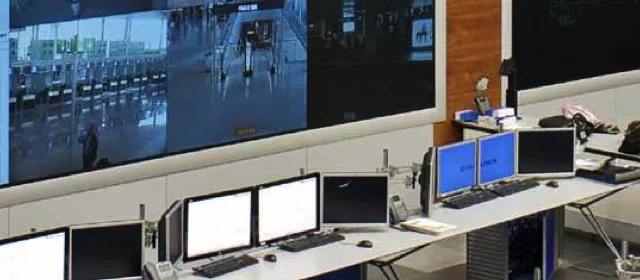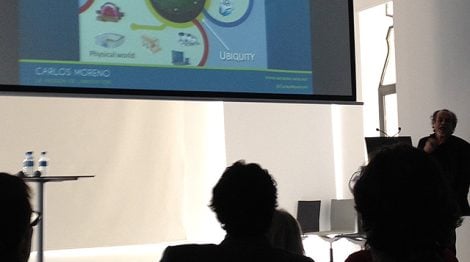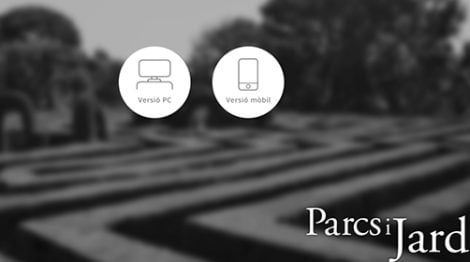The Airport as a Smart City: our Project for AENA
“The centralization of operations that Wonderware offers us, managing around 700,000 signals, is fundamental for a critical infrastructure such as an airport. Today we can have a quick response to i...


“The centralization of operations that Wonderware offers us, managing around 700,000 signals, is fundamental for a critical infrastructure such as an airport. Today we can have a quick response to incidents and, in addition, be proactive in optimizing management. A fundamental tool to achieve this”
Jordi Asensi,
Head of the Management and Systems and Databases Department of AENA
Barcelona Airport.
The Airport as a Smart City
With these words from Jordi Asensi, we want to present our project already completed at the Barcelona – El Prat airport. As you will see, an airport contains the same services as a city in a small space, so we can say that we have transformed this small city into a Smart City.
Aeropuertos Españoles y Navegación Aérea (AENA) is a public business entity in charge of civil air navigation and civil airports in Spain. AENA is the leading airport operator in the world with nearly 200 million annual travelers.
From Process Management to a Global One

Although the Airport had been operating with full service guarantees since its early years of operation, in 2000 it began to be considered that the fact that each integrator that worked with an installation at the airport implemented its own monitoring elements and its management tools could be improved:
“Each brand for each functionality provided its own control solution”, adds Rafael Cortés, Head of Maintenance Projects at Emte Sistemas.
Therefore, the airport was in a scenario in which 15 or 20 integrators worked with a multitude of technologies. The multiplicity of systems meant that all operators had to know many different tools and the existing control structure made it practically impossible to achieve fluidity in the terminal’s management processes. The proper functioning of the installation entailed high levels of operational stress and caused the constant threat of not properly attending to the multiple incidents that inevitably arose daily.
“There were specialists in practically every process and maintenance costs were tremendously expensive,” comments Carles Rivas, Coordinator of the Infrastructure Area of Emte Sistemas, which also forced, “to have multiple contracts with many suppliers and required an additional training effort”
since each system worked with its own signal logic and it was necessary for the personnel to internalize it to ensure the proper functioning of the terminal. In this sense, for Asensi, one of the key issues for considering the evolution of the existing control system was that structured in this way, it forced AENA to have proprietary systems with the consequent dependence on the manufacturer that supplied them.

“The fact that to control a process as simple as the lighting of the building, information was on a local screen in the energy control room and other data was displayed in the engineering room, for example, prevented working the processes as unique and it was difficult to cross them to attend to other issues, such as the environmental factor”, details Rafael Cortés.
For this same reason, an important challenge was also raised when it came to resolving incidents. Although all events were always attended to,
“it was inevitable to carry out an exhaustive analysis of each subsystem to understand where the malfunction was located, which, surely, delayed the response time”, points out Carles Rivas.
Faced with the Challenge of Controlling a Small City like an Airport.
This complex management scenario for the Barcelona terminal and the experience lived by another of the AENA air terminals of new construction, which opted for the same model of operation of facilities, made the management of the Barcelona Airport consider looking in the market a solution that guaranteed full connectivity
“that could cover different manufacturers, that made all the systems speak in the same language and that had a scalability that responded to the airport’s growth expectations”.
“It was a priority to normalize processes and technologies” explains the management of AENA. Likewise, it was necessary to implement a reliable control architecture, since as they detail, “an airport terminal such as the one in Barcelona is a highly critical environment where service losses in any of the areas imply great complications to the normal development of operations”
and necessarily had to be scalable, since at the beginning of the project the airport had one terminal, but the construction of another with greater capacity than the existing one was in the project, and in addition, it was sought to integrate buildings attached to the terminals into the control environment. Finally, it was required that the project have an economically reasonable development, since being a public infrastructure, the budgetary costs were clearly limited. After a market analysis, Wonderware was the solution that at a technological level best responded to the challenges they faced and was the only non-proprietary one, which guaranteed being able to manage the terminal competitively in terms of costs and work teams.

From AENA it was decided that for each new field device that was installed, whatever type it was, a series of ‘rules’ should be followed so that once implemented it would naturally couple to the management layer with System Platform from Wonderware. These rules were made known to those responsible for deploying new services for the facilities, those who arrived at the project through public contract awards, with which despite having different companies working on multiple projects, many times simultaneously, total uniformity was guaranteed in the development.
“A whole work of negotiation of information was carried out with the multitude of installation companies that were involved in the different projects to guarantee the subsequent cost savings both at the level of development and maintenance of the system”, detail the infrastructure managers.
Phases of the Smart City Project to “Smart Airport”
A project like this cannot be understood without its scalability. The Airport is a living system that should never stop. In addition, the implementation of the Wonderware platform for real-time management of all systems must also grow as the infrastructures in which it is implemented do.
The Airport was growing and for us, that is not a problem: working like that is one of our strengths.
1. First phase: unite all existing proprietary systems:
- lighting
- climate control
- belts
- escalators
- elevators
- accesses
- etc
In total there were 35,000 signals on the same platform: Wonderware.
2. Second phase: integration of the Facilities Control System of the New Airport Space
- fire station
- civil guard
- waste facilities
- hydrological control and water pumping systems
- etc
80,000 signals managed in real time and centralized (including those from the first phase) on the same platform: Wonderware.
3. Third phase: deployment of the T1 control infrastructure
- standardization of programming and engineering routines that guarantee the perfect coupling of systems
In total 280,000 signals in real time centralized on the same platform: Wonderware.
“Each object was assigned a definition to interpret the PLC signals as determined by the engineering team. Thus, all PLCs, whatever their brand, would have a common interface to the SCADA systems decided by the airport”
4. Fourth phase: Automatic Baggage Transport System (SATE)
- Thanks to this, Barcelona airport has one of the lowest ratios in Europe in relation to baggage loss.
5. Fifth phase: connection to the Wonderware system of the Electrical Power Plant of the New Terminal Area (CENAT)
Once the fifth phase is finished, 700,000 signals are already managed through 80 servers that make up five control environments. All this managed in real time and centralized on the same platform.

Airport Operations Controlled with Wonderware Technology.
They seem typical of a Smart City, but in reality we have managed to transform the airport into a “Smart Airport” by managing all these services under the same platform. All of them are centralized and controlled in real time even though they belong to a multitude of different manufacturers. This is the power of an open platform like Wonderware!
- Building Management in Terminal 1 and Terminal 2:
- Passenger transport systems: escalators, elevators, conveyor belts, in addition to accesses.
- Lighting.
- Air conditioning.
- Fire safety systems.
- Low voltage.
- Flight operation support:
- Registration of the time of the aircraft in fingers for subsequent billing.
- Control and monitoring of services attached to the terminals:
- Police and fire station
- Waste management
- Hydrological control (groundwater level management)
- Management of Power Plants:
- CELT – Land Side Power Plant
- CELA – Air Side Power Plant
- CENAT – Electrical Power Plant of the New Terminal Area
- CEREM – Central located in the protected area of El Remolar
- CEN – Energy Plant for cooling and heating power integrated in T1
- Baggage management:
- Support for monitoring the activity of the Automatic Baggage Transport System (SATE).
- Future projects:
- Beacon Presentation Control System (SMPB)
- Control tower of the management platform
- Satellite Terminal

… And some Interesting Testimonies:
“Now all the terminals are managed with a common environment. Below, each system continues to function with the logic of its own systems, but Wonderware has created a layer of extraction and interconnection between the different elements that makes it possible to manage many signals in a unified way ”
“The fact that a public service infrastructure such as an airport has the freedom to contract the maintenance services of the control platform is possible thanks to the fact that Wonderware offers an open architecture, recognizable by any company specialized in its solutions”
Jordi Asensi
Head of the Management and Systems and Databases Department of AENA
“Before, all the data was separated, it was difficult to understand and attend to an incident. We were more reactive and it was a more unstable infrastructure. Now the system has the reliability that is required of an airport of the category of Barcelona, located among the best in the world ”
“Above each group of objects, an initialization template was defined, contemplating up to 4 levels, which allowed to make changes without having to modify element by element. The template script defines the behavior of all the objects in its charge, so the system modifications were propagated safely and easily ”
Oscar Saco
“The fact that Wonderware offers us a system for absorbing, managing and distributing alarms allows us to manage an immense number of events, even thousands of alarms in seconds. Otherwise it would not be feasible to do so ”
Rafael Cortés
“Normalizing and standardizing the control platform, as well as reusing many of the developments on the logic of behavior of the devices, is a great advantage. Without Wonderware technology, it would surely have been more difficult to reach the point of integration in which we find ourselves today and move on to the next step, in which for a process, be it from the airport, it is handled in the same way and work is not duplicated ”
Carles Rivas
“It has allowed to significantly reduce the costs of development and subsequent maintenance of the application while fully guaranteeing the integration of all operations”
Jordi Oliva





